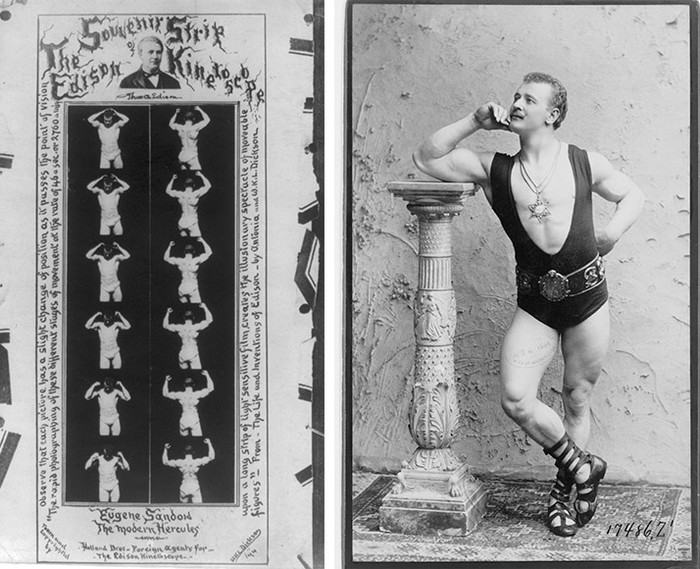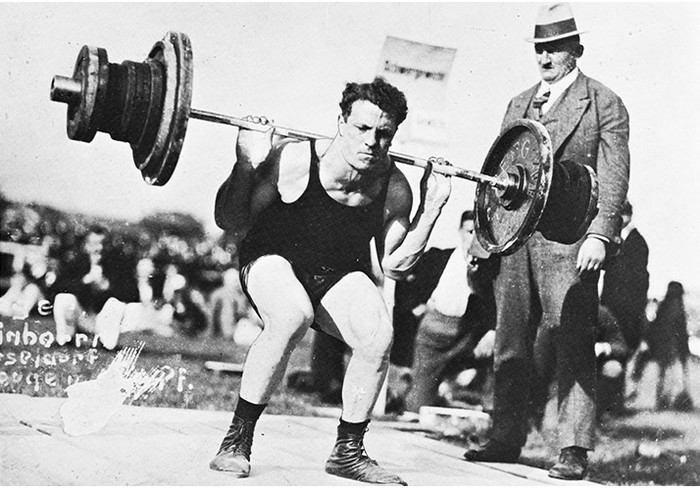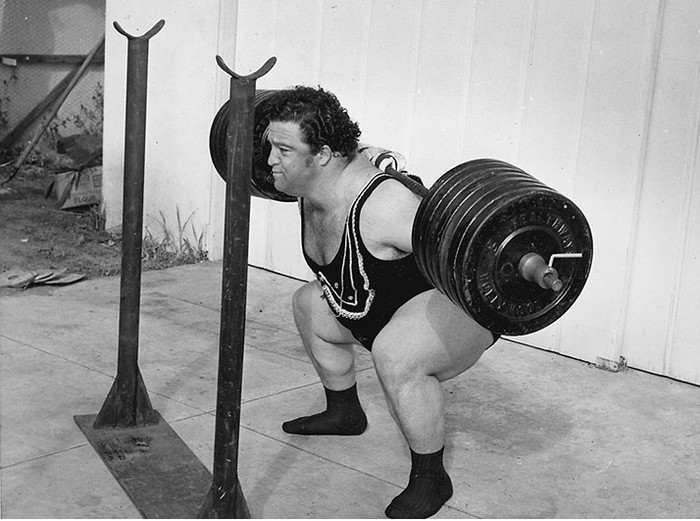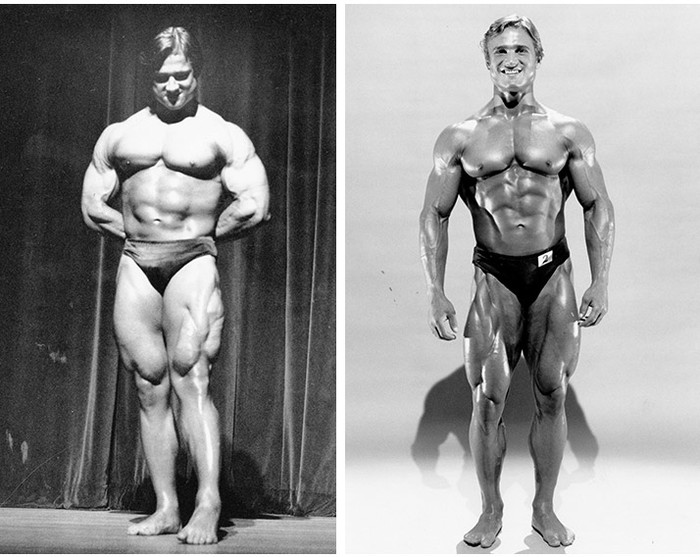If you're serious about squatting, watch the video above to learn the roots and evolution of this incredible exercise. Then put your squat to the test in one of these BodyFit Elite programs:
The King of Exercises
People call the squat the "king of exercises." But it's more than that. It's the first exercise you ever did—and nobody even taught you how. You invented it—we all did—deep in our early childhood, the first time we needed to pick up a toy off the ground. Back then, we didn't know the movement even had a name, but we knew we could rest comfortably in it for minutes on end.
Some of us stop squatting as we grow up. In some cultures, it remains the default rest position, and you'll see people casually squatting as they wait on street corners and train platforms. But others take the squat dead seriously, putting immense loads on their backs. They squat to break records, or to build superhuman legs. At its best, the motion is the same as when you were a child—you sit down, you stand back up.
As an exercise, the weighted squat has its own unique history which predates bodybuilding, powerlifting, and even Olympic weightlifting. Its roots stretch back to the days when weight training was the domain of professional strongmen, who performed incredible feats of strength in front of wide-eyed audiences.
If you're serious about squatting, watch the video below to learn the roots and evolution of this incredible exercise!
History of the Squat
The squat has had many proponents, but four people really helped develop the movement and bring it into the modern mainstream. To complete your iron history lesson, here are the people—and the unique contributions of each—you need to know.
The Strongman Eugene Sandow
You probably don't associate the most famous Victorian strongman with squatting. He is better known today as the first bodybuilder, as well as the inspiration for the Sandow trophy given annually to the winner of the Mr. Olympia title. His legendary physique was the product of a life spent putting heavy dumbbells, barbells, and kettlebells overhead using a wide range of presses, jerks, and snatches.
But legs like his weren't the product of overhead lifts alone. In his landmark 1894 book "Sandow's System of Physical Culture," he also made one of the earliest recommendations in print to use squatting movements for quadriceps development. In a description that holds true today, he wrote, "By bending the knees, dip the body in a vertical line to the heels, keeping the back straight and the chin drawn in. Recover and repeat the movement until the muscles ache."

Eugene Sandow is better known today as the first bodybuilder, as well as the inspiration for the Sandow trophy given annually to the winner of the Mr. Olympia title.
Eugene Sandow is better known today as the first bodybuilder, as well as the inspiration for the Sandow trophy given annually to the winner of the Mr. Olympia title.
Where did Sandow learn to squat? Lifting coach John Broz theorizes that it must have come from his mentor, the legendary strongman and teacher Professor Louis Attila. But whatever the source, Sandow's squat was only the start of the conversation. Performed with dumbbells at the sides, it was a light exercise "in poising the body and in giving suppleness to the knee joints" rather than raw strength.
Nevertheless, Sandow's worldwide fame for his strength—and just as importantly, his physique—inspired countless young men and women to follow in his footsteps. It took another 30 years for someone to push the upper limits of what could be squatted with a heavy barbell. The reason was simple: How would they get it on their back?
The Innovator Henry "Milo" Steinborn
German-born strongman and wrestler Henry Steinborn was perhaps the world's first squat specialist, at a time when heavy squats were still relatively unknown. He could also more than hold his own in more famous lifts—including a 375-pound clean and jerk that stood unmatched for years—but today he is best known for a squat variation that came to be known as the "Steinborn lift."

German-born strongman and wrestler Henry Steinborn was perhaps the world's first squat specialist. He is best known for a squat variation that came to be known as the "Steinborn lift."
German-born strongman and wrestler Henry Steinborn was perhaps the world's first squat specialist. He is best known for a squat variation that came to be known as the "Steinborn lift."
Steinborn's namesake movement is an unassisted heavy squat wherein the lifter tips a loaded barbell onto his back, squats for reps, and then tips the barbell back over onto one side. Steinborn lifted over 500 pounds in this manner for reps, a number unthinkable in today's gym. Steinborn remained an active exhibition lifter and wrestler for decades, but his major contribution was to cement the barbell squat as a staple of strength and power training.
The Beast: Paul Anderson
Paul Anderson was the strongest man in the world by just about any measurement. At a time when the Olympic record for the clean and press was 330 pounds, he easily lifted over 400 while competing in an international competition in Moscow. At the 1956 Olympics, he earned gold with a 413.5 clean and jerk while battling an inner-ear infection and a 103 degree fever. The next year, he reputedly lifted over 6,000 pounds on his back, which the Guinness Book of World Records recognized as the heaviest weight ever lifted.

At a time when the olympic record for the clean and press was 330 pounds, Paul Anderson easily lifted over 400 while competing in an international competition in Moscow.
At a time when the olympic record for the clean and press was 330 pounds, Paul Anderson easily lifted over 400 while competing in an international competition in Moscow.
But like Henry Steinborn, Anderson is known best today for his squatting ability. He trained relentlessly, squatting tractor wheels and 55-gallon drums from a hole in the ground. He squatted full depth in his socks, but also practiced from all partial ranges of motion, as well as from rest at the bottom position, in what is known today as an "Anderson squat." His all-around approach resulted in unheard-of numbers in the squat, including a 930-pound official squat in 1965 and a 1,200 personal best in training.
Anderson's accomplishments made him a celebrity whose name was synonymous with strength. He also did more than perhaps anyone else to popularize the barbell back squat as a standalone lift.
The Bodybuilder: Tom Platz
By the 1970s, thanks to the pioneers above and a growing interest in physical culture, squatting had become mainstream. The new sport of powerlifting, and its leading lights like Pat Casey, showed the movement deserved to be contested outside of the Olympic lifts.
People could now order racks and barbells through the mail and read in magazines about how to squat to increase strength and build better physiques. During this time, a new generation of bodybuilders redefined what was possible by using the squat for leg development.

Tom platz's training volume was pure bodybuilder, and the leg development that resulted has been inspiring young lifters ever since.
Tom platz's training volume was pure bodybuilder, and the leg development that resulted has been inspiring young lifters ever since.
Competitive bodybuilders during the 1960s had been known to avoid squats, fearing that squats would make their waists and butts too big. However, golden-age lifters like Dave Draper, Arnold Schwarzenegger, and Franco Columbu scoffed at this talk, regularly engaging in high-rep heavy squat sessions to build their lower bodies and mental resolve.
Tom Platz took this fondness to the next level. He was taught to squat by Olympic-style lifters, including former gold medalist Norbert Schemansky, and his form showed their influence in its strict up-and-down verticality, below-parallel depth, and high bar placement. However, his training volume was pure bodybuilder, and the leg development that resulted has been inspiring young lifters ever since.
Master Your Squat
These athletes showed the world the possibilities of the human body. They made squatting look easy, even while using weights that should have broken them. Together, they helped cement what has become one of the cardinal rules of strength training: If you want to be big and strong, you need to squat.
But these four names only start the conversation. Start digging into the history of strength, and you'll encounter numerous other names—and countless routines—to help you become a stronger, better squatter. You'll marvel at the men who fell in love with the squat and moved mind-blowing poundage—800, 1000, and even 1200 pounds. You'll be tempted by classic high-frequency routines such as 5x5, Smolov, or "breathing squats," a brutal 20-rep assault dating back to the 1930s.
Where should you start? It's simple: Squat Every Day, a squat-driven program that will change how you train. Get ready to take a month of your life, put every other goal on hold, and get to know the squat intimately. Get ready to know the meaning of hardcore.
Some images and footage provided by:
- The HJ Lutcher Stark Center for Physical Culture and Sports
- The Paul Anderson Youth Home
- John Wood, www.oldtimestrongman.com
- Active Interest Media, www.musclemag.com.com
